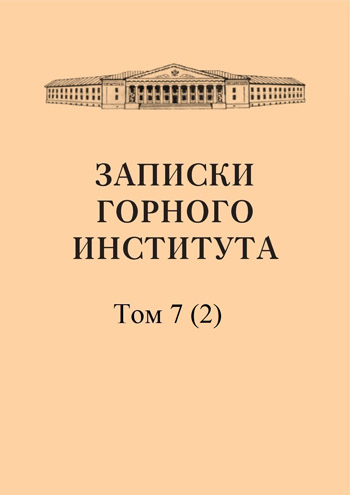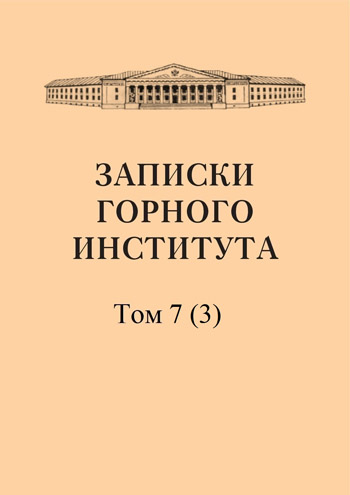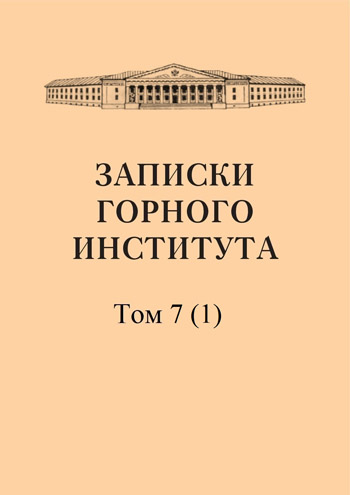-
Date submitted1927-08-11
-
Date accepted1927-10-30
-
Date published1928-02-01
In memory of Vladimir Ivanovich Bauman (1867 - 1923)
- Authors:
- I. M. Bakhurin
Bauman’s activities began at a time when mining, which had developed in our country, posed a number of new and complex tasks for surveyors. He radically reorganized the organization of surveying in the state; his activity should be noted as a special era in the development of the specialty in which he have worked. Our country also owes V.I. Bauman the introduction of the first of the geophysical exploration methods—magnetometry. Bauman's merit lies in the fact that he gave us this method, as a technical method, as a working one. Vladimir Ivanovich radically reorganized the teaching of surveying art and geodesy. He was the first professor in Russia in the independent department of surveying art. On his initiative, a surveying department was opened at our Institute at the Faculty of Geological Exploration.
-
Date submitted1927-08-18
-
Date accepted1927-10-25
-
Date published1928-02-01
On the cubic nature of the number 1-p
- Authors:
- A. Zhuravskii
This article gives a purely arithmetic method for obtaining the cubic character of the number 1—ᵽ. The method is based on the well-known Gauss lemma. For clarity, the author presents the numbers ɑ+βp, where ɑ and β are real as points of the plane. Thus, the problem comes down to finding the number of lattice points in a certain area. The result is achieved through a specific choice of fundamental area and appropriate division into parts.
-
Date submitted1927-08-16
-
Date accepted1927-10-29
-
Date published1928-02-01
Brief memories of the Mining Institute for the period 1858 - 1866.
- Authors:
- A. Karpinskii
The author, one of the oldest mining engineers in Russia, gives a very vivid picture of our institute. He briefly and vividly describes the organization of training and, in particular, the life and customs of the “wards” or “cadets” of that time. The article contains a lot of convincing and interesting autobiographical material . His stay at the Mining Institute was limited to the period from the end of the summer of 1858 to the beginning of the summer of 1866. The Institute, as is known, until the fall of 1865 was a closed educational institution for many years. During a significant part of this period, the Institute experienced a transitional state, which led to its transformation into an exclusively higher open educational institution.
-
Date submitted1927-08-10
-
Date accepted1927-10-08
-
Date published1928-02-01
On Bessel's functions of many variables and their applications in mechanics
- Authors:
- M. I. Akimov
The subject of this work is the study of functions that occur initially in the form of a definite integral (see article). As a simple example to explain the application of the obtained formulas, I give the classical problem of the motion of a spherical pendulum in the case of its small oscillations around the lowest equilibrium position. Examples of problems leading to the generalized Kepler's equation. The origin of Bessel's functions of many variables and their expression in the form of infinite series (see article). The author pays attention to equations satisfied by generalized Bessel's functions and the general solution of these equations.
-
Date submitted1927-08-26
-
Date accepted1927-10-22
-
Date published1928-02-01
On the torsion of rhombic and triangular prisms
- Authors:
- N. Neronov
In the problem of torsion of prisms and in corresponding hydrodynamic problems, it is necessary to solve an indefinite equation, where K is a constant, provided that f = o along the contour of the prism. K M. Paschoud considered the case of regular polygons. Based on the proposed approach, let us consider the cases of a rhombus and an isosceles triangle.
-
Date submitted1927-08-08
-
Date accepted1927-10-26
-
Date published1928-02-01
Graphical adjustment of resections
- Authors:
- N. Kell'
One of the most convenient methods for inserting a new point into an existing network in terms of field work is the resection method (Pothenot, Snelius problem). At sea near the coast and when traveling with a panorama of mountains, back resection to already known points and peaks is almost the only way to quickly and accurately determine the location. Also, resections obtained photographically, both during ground and aerial photography, are reduced to the Potenot problem on a plane. Therefore, any simplification of the solution to this problem deserves attention.
-
Date submitted1927-08-23
-
Date accepted1927-10-06
-
Date published1928-02-01
A method for solving problems encountered when choosing a mine site
- Authors:
- P. I. Pabnov
Choosing a location for a mine on a site is one of the most complex and difficult tasks encountered when opening a mineral deposit. Let us first consider what this task consists of, what must be guided by when solving it and what will be the circumstances and conditions that determine this or that position of the mine on the site.The following is a list of factors and conditions (see article). Our goal is to provide a method that, on the one hand, facilitates the solution of the problem of determining the location of a mine, even if this solution was approximate, but practically quite sufficient; on the other hand, it allows one to take into account a larger number of circumstances and conditions than is usually accepted in practice, since it is clear that the more of the latter are taken into account, the more successful the choice of location for the mine will be.
-
Date submitted1927-08-29
-
Date accepted1927-10-10
-
Date published1928-02-01
Notes on foundry in connection with the general question of factory experience, its accumulation and use
- Authors:
- P. I. Ievlev
Of the three essential conditions of good casting, namely, temperature, ventilation of the cores and condition of the funnels, the last two must be transferred from the realm of art to the realm of craft, after which such cases can no longer occur. In the simplest way, through photographic records of model divisions and funnels, changes in molding and casting processes, and by notes on drawings the reason and purpose of each significant change in design or work process, by an individual. The personal experience can be transformed into shared, transmitted, transformed and thus collected. Then the history of the development of the factory will no longer be so much an accumulation of repeated attempts and errors in different factories, and sometimes in the same factory.


